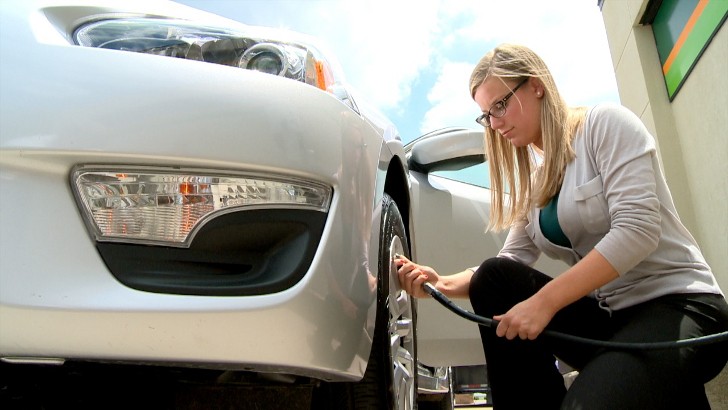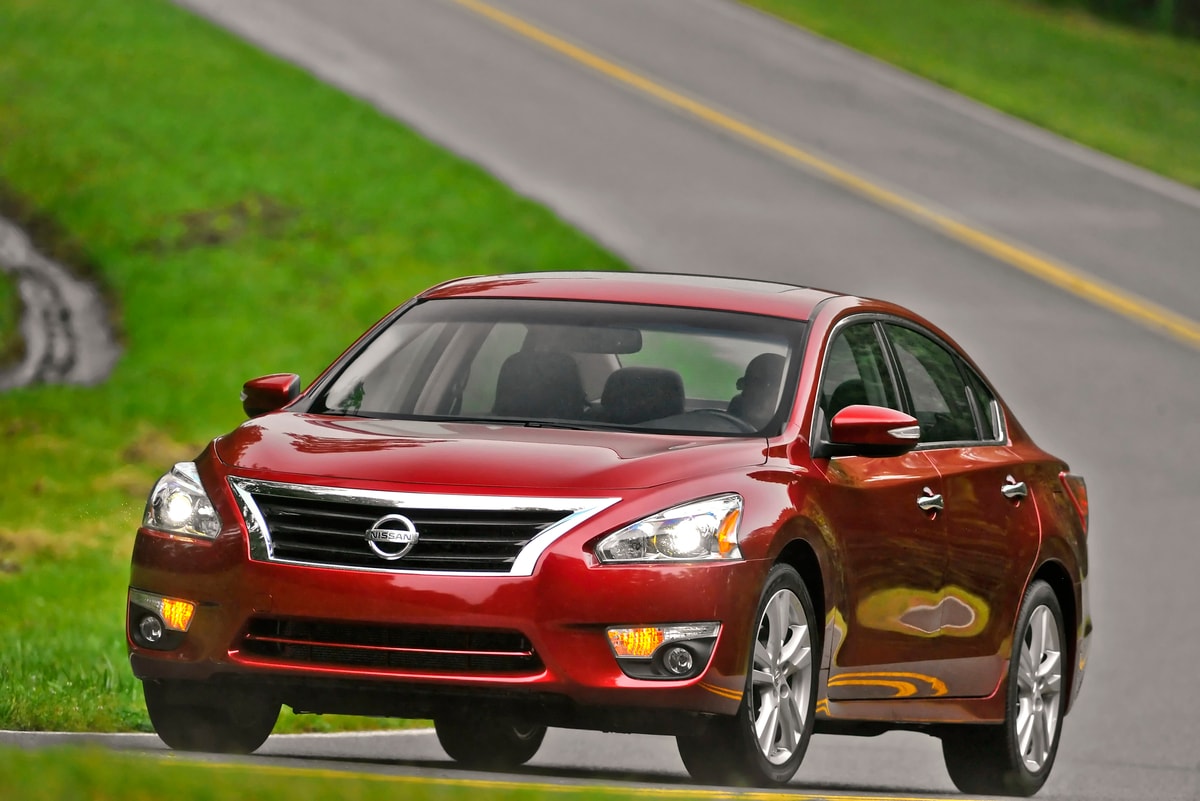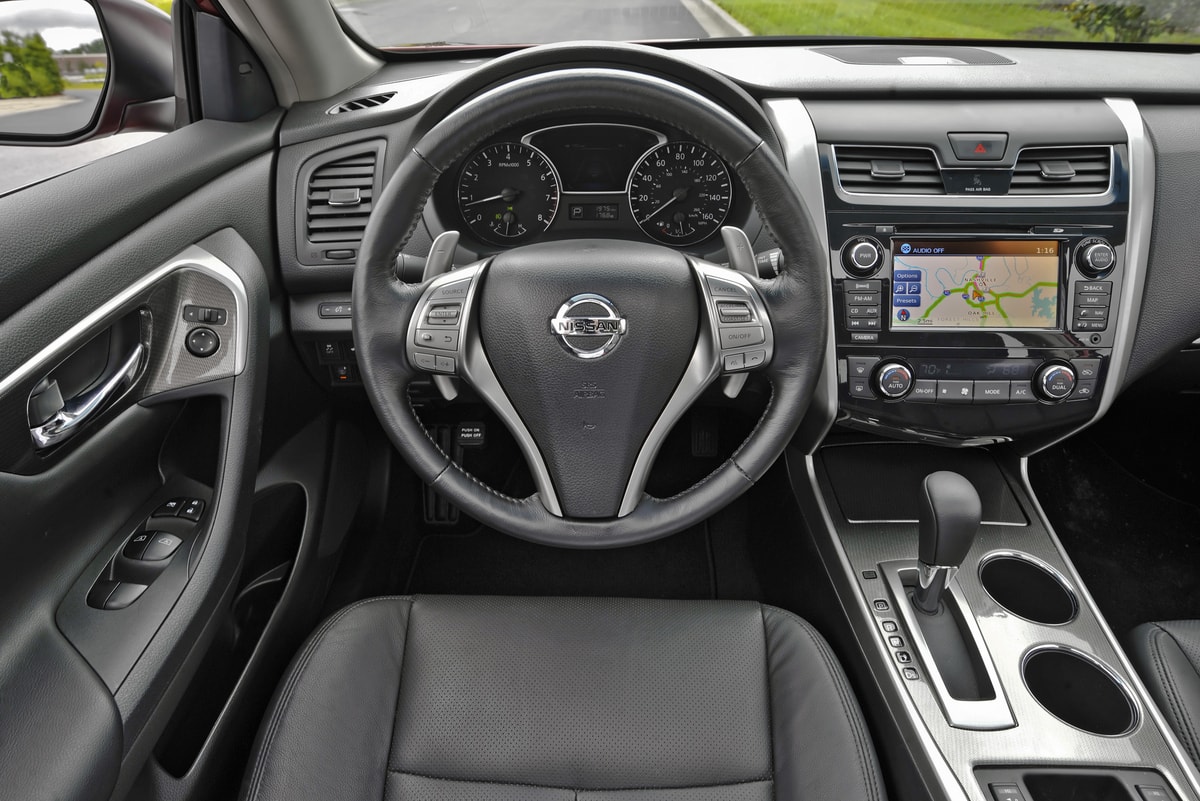Proper inflated tires are essential not only for your and your passengers' safety, but also for a better fuel economy and reduced emissions.
Authorities in many countries around the world call for dedicated campaigns that would make drivers aware of the risks caused by underinflated tires, while others went even further and made tire pressure monitoring systems standard on all locally-sold vehicles.
That's why Nissan's recently-developed Easy Fill Tire Alert system may be like a breath of fresh air for both drivers and authorities, as it's designed to help us keep all tires properly inflated all the time.
The idea behind this new technology is fairly simple: not all drivers are keeping a gauge in the trunk, so whenever they need to inflate the tires, it's almost impossible to reach the right pressure. Well, the new system keeps an eye on tire pressure and lets drivers know whenever they fill the tire and get the optimum pressure.
We're going to explain the whole process a bit later, but first let's see why do we really need such a system so much.
WHY
Because a properly-inflated tire provides you the best fuel economy and we all know how important this really is these days. Gas prices are skyrocketing every month, so anything that could increase mileage comes in very handy. Including an optimum tire pressure, that is.
But it's more important to know that underinflated tires are actually very dangerous for both you and the other motorists on the road. They could very well be the cause for losing control of the car, which in most cases may also lead to a deadly accident.
And studies conducted from various organizations around the world come to confirm this statement.
The National Highway Traffic Safety Administration (NHTSA) recently unveiled the results of a two-year study that brought the risks of using underinflated tires in the spotlight.
According to the findings, a vehicle with underinflated tires is three times more likely to be involved in an accident caused by tire problems. Just like tires with worn tread, underinflated ones are extremely dangerous on passenger cars, as NHTSA revealed that 66 percent of the crashes caused by tire problems involved this particular vehicle category.
Tire-pressure monitoring systems are standard in the United States since model year 2008, so all cars sold here need to be equipped with such a system. And that's very good news, especially because NHTSA revealed in 2009 that 57 percent of the drivers that had such a system on their vehicles maintained the tires properly-inflated.
The Japanese engineers at Nissan on the other hand tried to lend a hand to all drivers who don't carry a gauge in the trunk. Basically, in order to reach the optimum pressure in each tire, drivers need a gauge, so without such a tool, it's almost impossible to do it.
Nissan's Easy Fill Tire Alert Detailed has a unique system to assist drivers do that, blinking the four-way flashers whenever they start filling the tires. This is just a way to confirm that air is going in however, since without a gauge it may sometime be very difficult to notice it.
Now, let's suppose you're inflating the tire, but how do you know when to stop? Well, Nissan's cars now come with a horn that chirps when the optimum pressure level is reached, so you know exactly when to stop. Just be prepared. If you don't really pay attention to what you're doing and you put in too much air, the horn yells at you once again. This time for three times, while the flashers blink faster, so you get both audio and visual notifications.
Just let the air get out of the tire until you hear the horn chirping once again and you shall be ready to go.
As you can see, you don't really need to be a car guru to figure out how to use the new system and everything's quite intuitive. Just pay attention to the horn and the four-way flashers and you should be on the safe side all the time.
According to Nissan, the new system comes standard on the 2013 Altima, but many more models should get it in the near future. Of course, a built-in display is also available on the dashboard, showing the pressure for each tire, so you should know exactly which one's pressure needs to be adjusted.
But it's more important to know that underinflated tires are actually very dangerous for both you and the other motorists on the road. They could very well be the cause for losing control of the car, which in most cases may also lead to a deadly accident.
And studies conducted from various organizations around the world come to confirm this statement.
The National Highway Traffic Safety Administration (NHTSA) recently unveiled the results of a two-year study that brought the risks of using underinflated tires in the spotlight.
According to the findings, a vehicle with underinflated tires is three times more likely to be involved in an accident caused by tire problems. Just like tires with worn tread, underinflated ones are extremely dangerous on passenger cars, as NHTSA revealed that 66 percent of the crashes caused by tire problems involved this particular vehicle category.
Tire-pressure monitoring systems are standard in the United States since model year 2008, so all cars sold here need to be equipped with such a system. And that's very good news, especially because NHTSA revealed in 2009 that 57 percent of the drivers that had such a system on their vehicles maintained the tires properly-inflated.
HOW
There are many tire pressure monitoring systems out there on the market, but most of them are based on the same idea: sensors installed on each tire measure the pressure and light up a warning symbol on the dashboard as soon as the driver needs to inflate a specific tire.The Japanese engineers at Nissan on the other hand tried to lend a hand to all drivers who don't carry a gauge in the trunk. Basically, in order to reach the optimum pressure in each tire, drivers need a gauge, so without such a tool, it's almost impossible to do it.
Nissan's Easy Fill Tire Alert Detailed has a unique system to assist drivers do that, blinking the four-way flashers whenever they start filling the tires. This is just a way to confirm that air is going in however, since without a gauge it may sometime be very difficult to notice it.
Now, let's suppose you're inflating the tire, but how do you know when to stop? Well, Nissan's cars now come with a horn that chirps when the optimum pressure level is reached, so you know exactly when to stop. Just be prepared. If you don't really pay attention to what you're doing and you put in too much air, the horn yells at you once again. This time for three times, while the flashers blink faster, so you get both audio and visual notifications.
Just let the air get out of the tire until you hear the horn chirping once again and you shall be ready to go.
As you can see, you don't really need to be a car guru to figure out how to use the new system and everything's quite intuitive. Just pay attention to the horn and the four-way flashers and you should be on the safe side all the time.
According to Nissan, the new system comes standard on the 2013 Altima, but many more models should get it in the near future. Of course, a built-in display is also available on the dashboard, showing the pressure for each tire, so you should know exactly which one's pressure needs to be adjusted.




